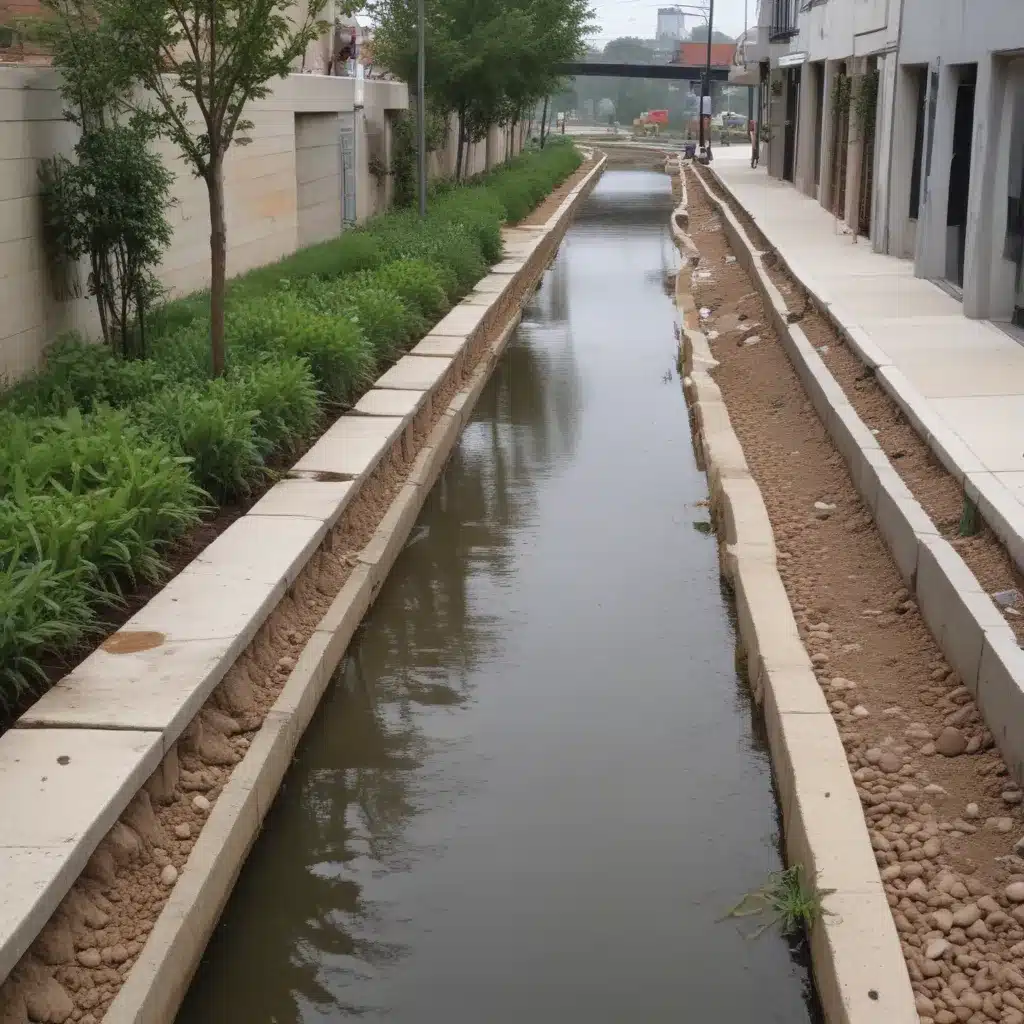
As an experienced plumbing consultant, I’ve had the privilege of working on a diverse range of projects across the UK – from residential homes to large-scale commercial and industrial developments. In our 15 years installing… In my time, I’ve seen firsthand how the integration of modern drainage systems with sustainable urban design principles can transform the way we approach infrastructure development.
Sustainable Urban Drainage Systems
At the heart of this approach is the concept of Sustainable Urban Drainage Systems (SuDS). These innovative solutions go beyond traditional piped drainage, embracing a more holistic, nature-based approach to managing stormwater runoff and enhancing the overall resilience of our built environments.
Principles of Sustainable Design
Water Sensitivity: SuDS prioritize the responsible management of water resources, focusing on infiltration, storage, and controlled release of stormwater. By reducing the burden on conventional drainage networks, they help mitigate the risks of flooding and water scarcity.
Multifunctionality: Sustainable drainage systems are designed to serve multiple purposes – not just stormwater management, but also the creation of attractive public spaces, the enhancement of biodiversity, and the promotion of sustainable transportation options.
Climate Resilience: As our climate continues to evolve, SuDS offer a flexible, adaptable approach to urban infrastructure that can withstand the challenges posed by increased rainfall, sea-level rise, and other environmental changes.
Drainage Infrastructure Integration
Integrating SuDS into the urban landscape requires a deep understanding of drainage layout, pipe sizing, and water pressure considerations. This begins with a thorough analysis of the site’s topography and existing drainage patterns.
Drainage Layout and Topography: By carefully mapping the contours of the land, we can identify optimal locations for infiltration systems, detention basins, and other SuDS features that work in harmony with the natural flow of water. This ensures efficient drainage while minimizing the need for extensive earthworks or disruptive infrastructure changes.
Pipe Sizing and Water Pressure: Selecting the right pipe materials and diameters is crucial for ensuring adequate water pressure and flow throughout the system. This takes into account not only the immediate drainage needs but also future growth and potential changes in water usage patterns.
Subsurface Storage and Infiltration: In addition to surface-level features, SuDS often incorporate permeable paving, infiltration trenches, and underground storage tanks to capture, filter, and gradually release stormwater back into the ground. These subsurface elements help recharge local aquifers and reduce the burden on traditional drainage networks.
Stormwater Management Strategies
SuDS offer a diverse range of strategies for managing stormwater, each tailored to the unique characteristics of the site and the needs of the local community.
Decentralized Approach
The decentralized approach to stormwater management focuses on integrating small-scale, distributed solutions throughout the urban landscape. This includes:
Permeable Surfaces: Porous paving, permeable concrete, and other permeable materials allow stormwater to infiltrate directly into the ground, reducing runoff and promoting groundwater recharge.
Bioretention Facilities: Strategically placed rain gardens, swales, and filter strips capture, filter, and slowly release stormwater, providing both drainage and ecological benefits.
Centralized Approach
Complementing the decentralized approach, centralized stormwater management features larger-scale facilities that can handle more significant volumes of runoff:
Detention Basins: These shallow depressions temporarily store and slowly release stormwater, reducing peak flows and minimizing the risk of downstream flooding.
Constructed Wetlands: Carefully designed wetland ecosystems filter and store stormwater, providing habitat for diverse plant and animal species while enhancing the aesthetic appeal of the urban landscape.
Environmental Impact and Regulations
Incorporating sustainable drainage principles into urban design has far-reaching environmental benefits, but it also requires careful consideration of relevant regulations and guidelines.
Ecological Considerations
Habitat Preservation: SuDS features, such as wetlands and vegetated swales, can provide valuable habitat for a wide range of flora and fauna, supporting local biodiversity and ecosystem health.
Water Quality Protection: By filtering and slowly releasing stormwater, SuDS help to remove pollutants, sediment, and other contaminants, safeguarding the quality of local waterways and groundwater resources.
Regulatory Compliance
Local Ordinances: Municipal and regional authorities often have specific requirements and guidelines for stormwater management, which might want to be carefully reviewed and incorporated into the design process.
National Standards: In the UK, the Flood and Water Management Act 2010 and the SuDS Manual published by CIRIA provide comprehensive guidance on the design, installation, and maintenance of sustainable drainage systems.
Socioeconomic Benefits
The integration of sustainable drainage solutions into urban design extends beyond environmental benefits, offering a range of socioeconomic advantages for local communities.
Community Engagement
Recreational Amenities: SuDS features, such as detention basins and constructed wetlands, can be designed to incorporate walking trails, seating areas, and other recreational elements, transforming them into valuable community assets.
Property Values: Studies have shown that the incorporation of well-designed, aesthetically pleasing SuDS features can contribute to increased property values, benefiting both homeowners and local authorities.
Life-Cycle Cost Analysis
Capital Expenditures: While the upfront costs of implementing SuDS may be higher than traditional piped drainage systems, the long-term savings in maintenance and operations can often justify the investment.
Maintenance and Operations: SuDS generally require less intensive maintenance compared to conventional drainage infrastructure, as they rely more on natural processes and require fewer mechanical components.
As the world continues to grapple with the challenges of urbanization, climate change, and resource scarcity, the integration of sustainable drainage systems with holistic urban design principles has emerged as a critical strategy for creating resilient, livable, and environmentally responsible communities.
By embracing the principles of water sensitivity, multifunctionality, and climate resilience, we can transform the way we approach urban infrastructure development, delivering tangible benefits for both the environment and the communities we serve.
At Plumbing Drains North Wales, our team of experienced consultants is dedicated to providing innovative, sustainable solutions that meet the evolving needs of our clients across the UK. We are passionate about sharing our expertise and collaborating with architects, urban planners, and local authorities to drive meaningful change in the way we design, build, and maintain our urban environments.

